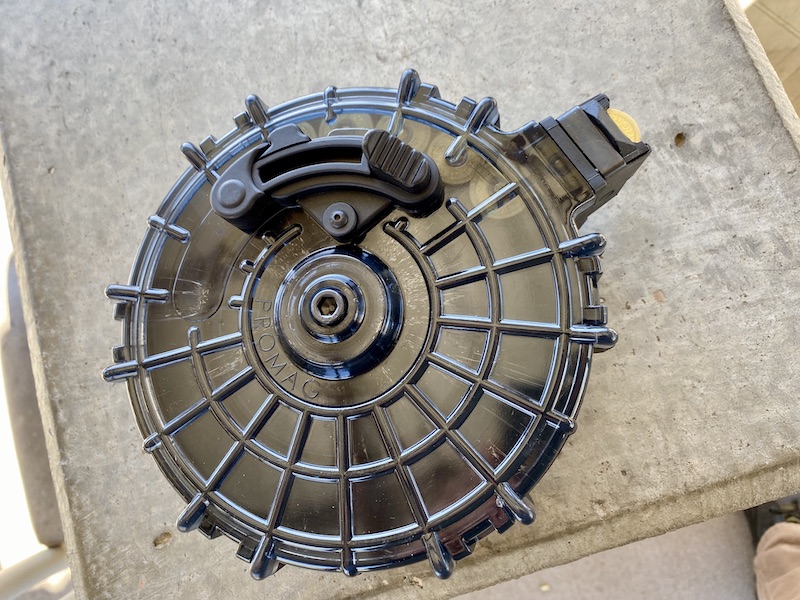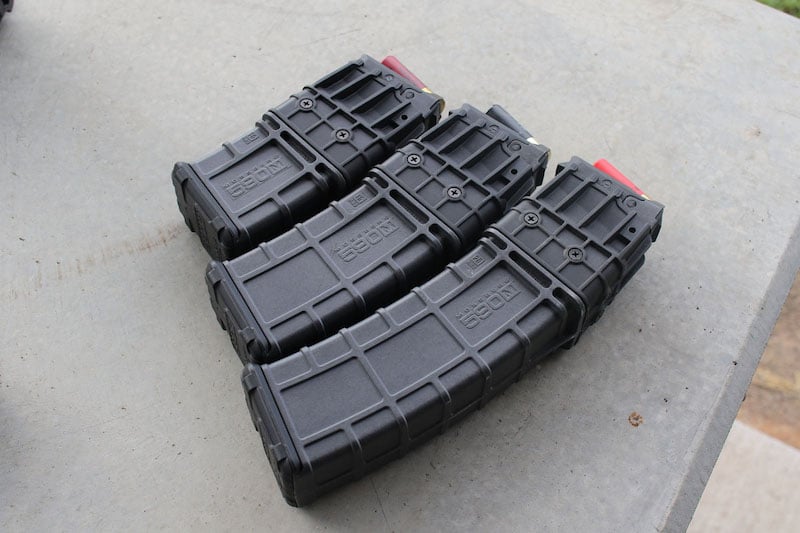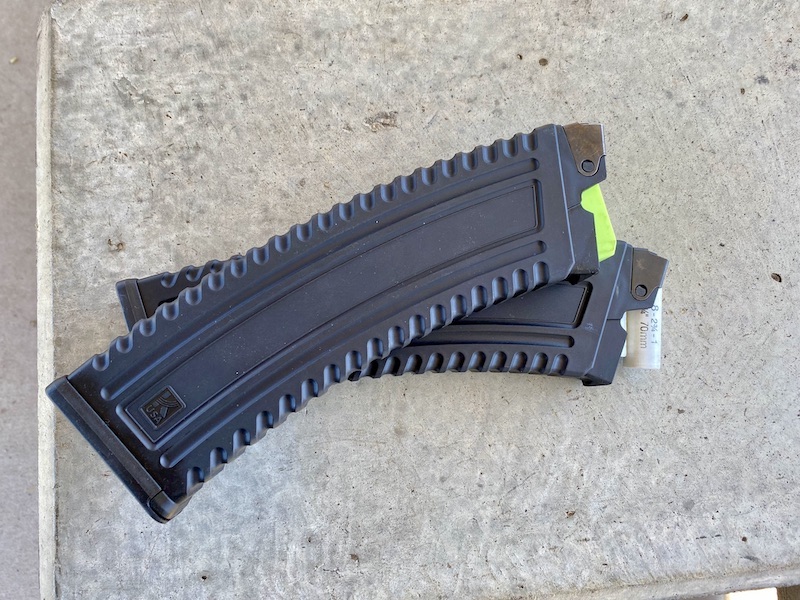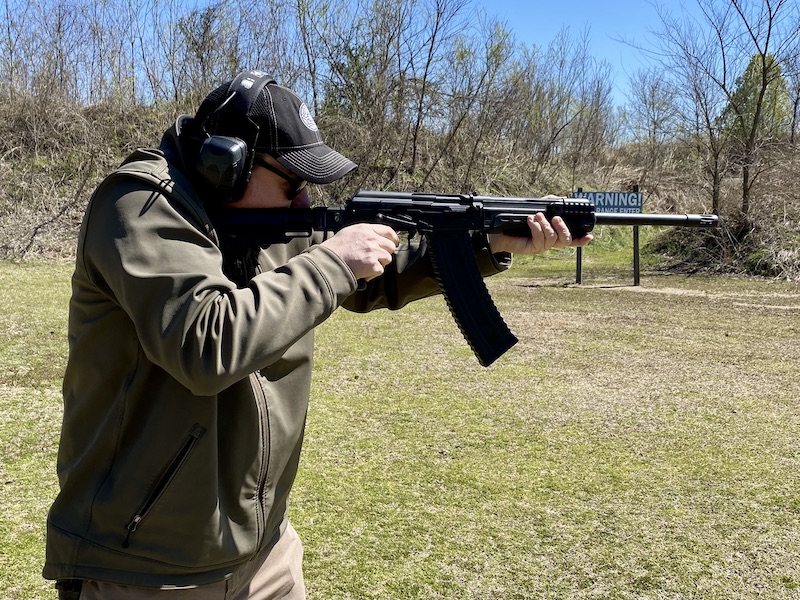Shotguns don’t hold many rounds. Most of them, that is. There are some notable exceptions—mostly pump guns that get creative with dual or rotating magazine tubes. Traditional pump actions, though, and semiautomatics—even those built for defense—are still the norm.
That hasn’t stopped the inventors from building mashups and getting creative.
Defining Some Terms
There are single-shot shotguns. Self-explanatory, really. Most are break-barrel breach-loaders, though there are a few bolt actions still kicking around. I lump double-barreled guns in here, too.
By far, the most common designs for mag-fed shotguns are those that load from tubular magazines held under the barrel. These are your typical pumps and semi-automatics. Some of these have rods in them to limit how many rounds you can fit in a tube, while others, especially those used for some types of goose hunting or competition, will have extenders on them that reach well beyond the end of the barrel.
Box mags work for both pump and semiautomatics and are familiar enough in their design by this point. Capacities vary wildly. Some internal bolt-action mags have been around for close to a century.

Drum mags attach like a box mag, but they’re larger and wider and increase capacity accordingly.
Both of these latter types have a long history in rifles (and even with handguns) and have recently caught on strong for the scattergun, but they come at a price.
For this article, when I say “mag-fed shotgun,” I’m talking about the mags that can be swapped out—not the fixed magazine tubes.
Disadvantages of Mag-Fed Shotguns
There’s no way to sugarcoat this. As you add rounds to a platform, the weight goes up. With 12 gauge ammunition, this weight adds up quickly. The more weight you add to the gun, the slower it moves.
This is true for guns like the Kel-Tec KSG, even. Load it up and it feels really solid. Compare it to a Stevens 555 and you’ll feel just how one needs to be muscled through a swing and the other moves more nimbly. Apples to oranges, though.
And a traditional pump shotgun, as an example—even if is heavy like an 870 or 590—will balance differently than a mag-fed version of either of these guns. I’m not 100% convinced that this change of the balance point is a disadvantage, though it is something that I’ve had to work with in training to develop proficiency.

There’s another point that can’t be dismissed. Guns like the 590 and 870 are known for their fool-proof, do-it-all design. They rarely go down. However, adding a mag into the equation provides another moving part that can cause problems.
Advantages of a Mag-Fed Shotgun
Before you think I’m criticizing the mag-fed concept, I’ll note that this is true for every gun that feeds from a magazine. Mags, though, are nothing if not changeable. If one mag does have an issue, you can drop it and insert another, no problem. And reloading a mag-fed shotgun is so much easier (at least for most of us).
Capacities, too, can be really attractive. No need to accept the status quo. A nice drum mag is a thing of beauty. Your shoulder may disagree, as those mag-dumps are high impact, but that’s why you have two shoulders.
I’d wax poetic here about how you can carry multiple mags, but this is really not as effective with drum mags or the wide-body styles in use by Mossberg. While it isn’t impossible to carry a spare or two on you, this isn’t like handgun mags. These things are bulky.
It is more easily accomplished with single-stack designs like those for the AK lines. These are much thinner and can be carried on a chest rig, or in a pocket.
The Mossberg 590M
For those new to Mossbergs, the 590 is like an overbuilt 500. The 590M designation signifies that it is fed from an external magazine, one that attaches directly behind the pump action’s slide.
These come in 20 round varieties, and 15, 10, and 5, too. The magazines are bolted together and exceptionally robust. Most of the design is injection molded, but the design is far more rigid than your typical rifle magazine.

The body holds rounds in a stagger-stacked pattern that spreads the load out wider than a Coke can to cut down on the length. The last thing you want is a crazy-long mag that limits mobility.
Inside the mag, the spring applies pressure to a follower that’s designed to hold the rounds level. This helps with the reliability and forces rounds firmly into the opening at the top. At that end, there are steel feed lips that help withstand the aggressive action of Mossberg’s pump design.
I’ve had a 590M now for five years, at least, and I’ve yet to have a magazine fail on me or a round misfeed.
The KUSA KS-12
But what if you want something faster? What if you want a gun that’s been designed to burn through rounds from a semiautomatic action, rather than a gun retrofitted to take an external mag?
While the AK shotguns are not the only semiautomatic mag-fed shotguns, they are by far the most popular. Chalk it up to the popularity of the Kalashnikov legacy. The platform seemed very natural right from the start.
Compare this (sadly) to the struggles the AR-pattern shotguns have faced. While there have been some really compelling attempts over the years to take the AR-15 design into the scatter-gun space, few have been successful. My personal view is that the size difference is too noticeable. Receivers are stretched out, controls are oddly spaced, and the weight difference just caps off the odd feel.

The KS-12, and the others like it, feel instantly familiar to anyone familiar with an AK. While all of the same adjectives apply, the gun doesn’t feel swollen or unnaturally heavy. These are surprisingly graceful in that wonderfully powerful kind of way.
Mag changes, too, will feel instantly familiar to anyone who has ever rocked out a 7.62 x 39 AK mag. The magazines, though, may feel thinner—a bit light (especially when compared to those of the 590M).
The structure, though, remains the same. The followers shouldn’t tilt. The springs should punch rounds up between the steel feed lips, and the bodies of these mags should take hundreds of aggressive drops without ever showing signs of fatigue.
The Drum Mag for the KS-12
Some mags may take a bit of tweaking to get them to fit right. While most rifle mags either fit or don’t, companies that make mags for all (or most) of the AK shotguns are dealing with much looser tolerances. As such, dialing in a mag with a Dremel tool (or a traditional bastard file if you need to remove material more slowly) will provide that exact fit.

This ProMag took me a while to get to fit. Once I had it, the added capacity got expensive quickly. There’s something about running through an entire box of 12 gauge. And I’m still 12 years old at heart, so I like nothing more than loading up the thrower and chasing clays all over the range with the throttle on the KS-12 wide open.
More rounds are better, no?
The KUSA KS-12 has become one of my favorite shotguns. It is fast and exceptionally easy to handle, and the capacity provided by the magazines has earned it a permanent place in the safe.

That doesn’t mean I’m ditching the old 870 SBS. Even with its cut-down tube and limited capacity, its compact size makes it a unique tool with a very specific purpose. But it runs dry so fast.
I’ve not yet had the chance to take an AK shotgun or a 590M through the short-barrel process, but the KS-12 is on my list. When I first began working with the mag-fed designs, I wasn’t ready to trust my life to what seemed like a novelty. Not anymore.


